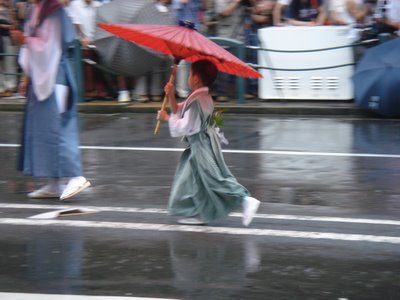Last week, Mayu-chan and I went to Gion matsuri, Yama-boko Junko (山鉾巡行, Yama-boko Junko) to be more precise.
Before I will show you the pictures, I will first let you read something about Gion Matsuri and Yama-boko Junko.
Gion Matsuri (祇園祭;, Gion Matsuri) is an annual festival that takes place in Kyoto and is said to be one of the most famous, if not the most famous festival in all of Japan. It spans the entire month of July and is crowned by the beautiful parade, the Yama-boko Junko (山鉾巡行, Yama-boko Junko) on July 17th.
This festival first originated as part of a purification ritual. In 869 CE the people were suffering from plague and pestilence which was thought to be a result of the rampaging deity Gozu. The emperor ordered that the people pray to the god of the Yasaka shrine, Susano-onomikoto. Sixty-six stylized and decorated halberds, one for each province in Japan, were prepared and erected at Shinsen-en Garden (at the intersection of Oike Street and Omiya Street, Nakagyo Ward) along with the portable shrines (omikoshi) from Yasaka Shrine.
This became a somewhat standard practice and was repeated wherever an outbreak would occur. In 970 CE it was decreed an annual event and has since seldom been broken. Over time the increasingly powerful and influential merchant class made the festival more elaborate and used the parade to brandish their wealth.
In 1533 the Muromachi shogunate halted all religious events, but the people protested stating that they could do with out the rituals, but not the procession. This marks the progression into the festival's current form.
Yamaboko Float Details
The floats in the Yoiyama Parade are divided into two groups, Hoko and Yama, and are collectively called Yamaboko. There are 9 of the larger Hoko which represent the 66 spears used in the original purification ritual, and 23 of the smaller Yama which carry life-size figures of famous and important people. All the floats are decorated with beautiful tapestries both from Nishijin (the finest in all of Japan) and imported from all over the world. In addition to the art, there are many traditional musicians and artists sitting in the floats.
Each year the families that maintain the floats draw lots at special meeting to determine what order they will take in the festival. These lots are issued at a special ceremony before the parade, during which the Mayor of Kyoto dons the robes of a magister.
Hoko FloatsWeight: about 12,000 kg
Height: about 25m from ground to tip / 8 m from ground to roof
Wheel diameter: about 1.9 m
Attendants: about 30-40 pulling during procession, usually 2 men piloting with wedges
Yama FloatsHeight: about 6 m
Weight: 1,200 – 1,600 kg
Attendants: 14-24 people to pull, push or carry

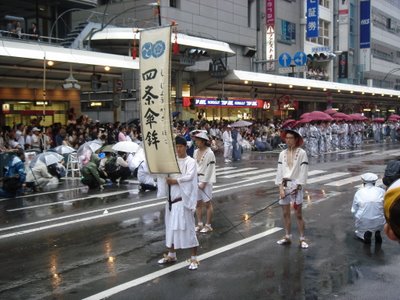
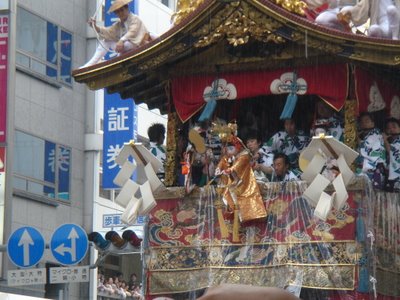


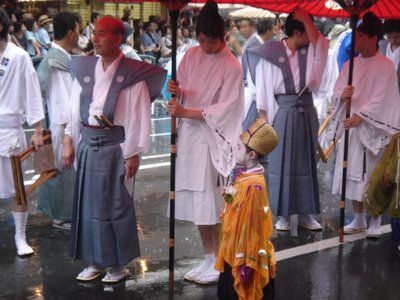


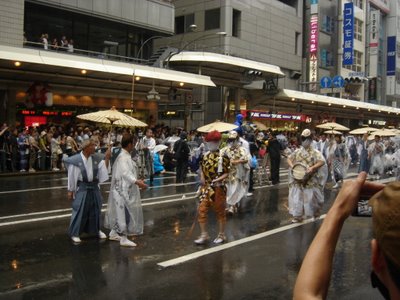

More to come!




